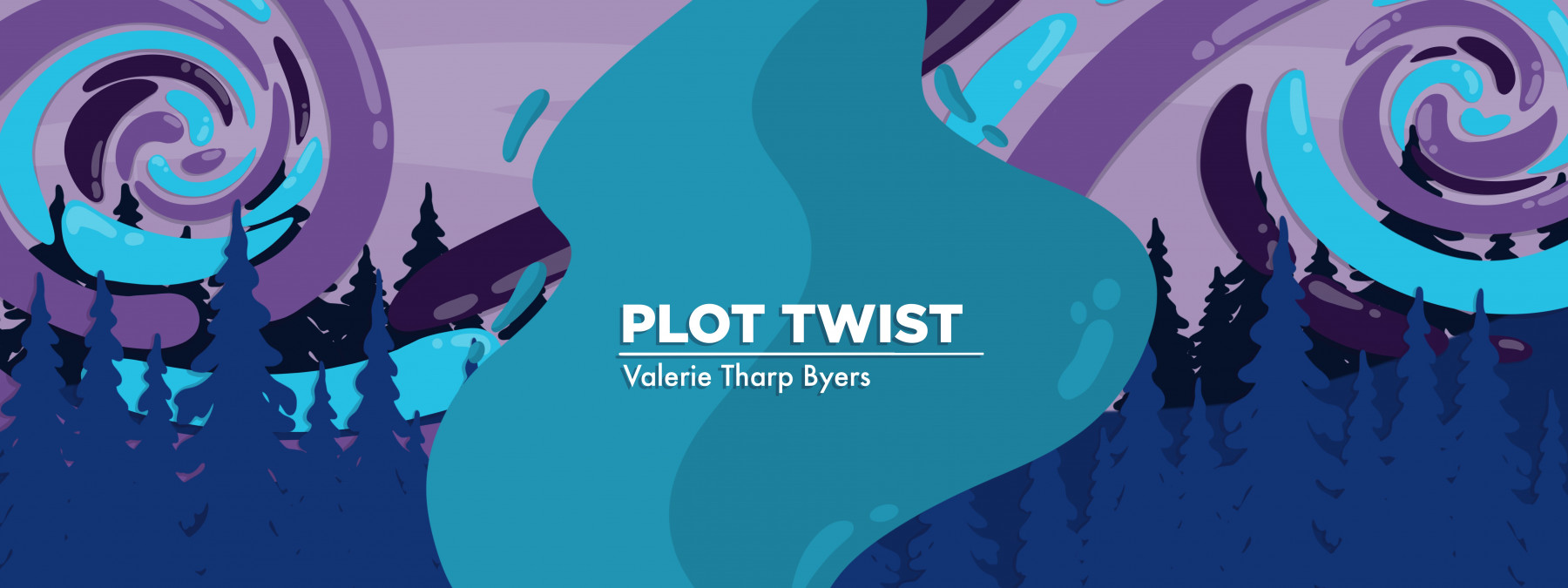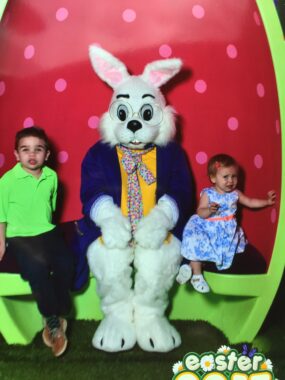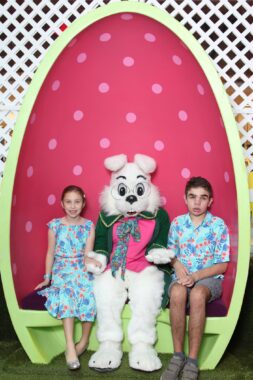As our son with Sanfilippo ages, we continue to visit the Easter Bunny
How this spring break tradition helps us find solace and strength
Written by |

“Who’s ready to see the Easter Bunny?” I coo to my less than impressed 13-year-old. I’m sorry, he’s 13 and three-quarters, as of this month. He looks at me impassively and stifles a yawn. I’d let him sleep until 8:30 a.m., and he still wasn’t thrilled with me for waking him up. “It’s spring break, Mom,” his eyes tell me.

Will and his younger sister visit the Easter Bunny in 2015, just days after he was diagnosed with Sanfilippo syndrome. (Courtesy of Valerie Tharp Byers)
“Too bad, so sad,” I say. “We had this picture scheduled for 11, and we took the time last night to make sure you were clean-shaven, so we aren’t missing it.” I think I catch a glare at the mention of the shave. He hates shaving and us making him do it. “Trust me, Will, it’s not my favorite pastime, either.” The now perpetual facial hair on my oldest child’s cheeks still gets my eyes misty. How did he grow up so much that he needs to shave? I’ll never get used to it.
What I have gotten used to are these one-sided conversations with my son, with me supplying his responses (complete with the likely teenage attitude he would infuse them with if he could).
Will has Sanfilippo syndrome type B, a rare and regressive genetic disorder that erodes his skills and abilities over time. Now in his early teens, he’s lost nearly all his verbal ability. It’s awful to not hear his voice or understand his thoughts or even know when things are bothering him. On the other hand, it means that I can tell myself that there are zero complaints about wearing matching outfits with his 10-year-old sister (who also humors me) to go see the Easter Bunny at the local mall.
Why we continue this tradition
The Easter Bunny visit is a spring break staple in our house. We don’t typically go anywhere during that time, preferring to stay home and enjoy local attractions here in the Houston area instead of fighting destination crowds. We might go to the zoo, museums, the rodeo, parks, or a local walking trail. But we always go to the Easter Bunny.
In 2015, the year Will was diagnosed, we visited the Easter Bunny during spring break, just 10 days after getting the worst news of our lives. My husband and I were completely broken, trying to make sense of our new journey in life. We didn’t even want to leave the house, but Will, still verbal then, wanted to go do all his spring break traditions. And one of those was visiting the Easter Bunny.

Will and his younger sister keep the Easter Bunny tradition alive in 2024, with matching outfits. (Courtesy of Valerie Tharp Byers)
So we packed up 4-year-old Will, his then 17-month-old sister (who could have done without meeting the giant rodent, thank you very much), and all our resolve to enter into public spaces, put on smiles, and pretended not to be falling apart. There were no coordinating outfits that year. It was a miracle that we were functioning enough to have clean clothes.
But we did it, and Will’s excitement, smiles, and chats with the bunny were enough to make it worth it for us. He wanted to see the Easter Bunny, so dang it, we were going to go see the Easter Bunny. Life was going to cheat him out of too much as it was; we weren’t going to let it cheat him out of this visit, too.
Now Will can’t tell me what he wants to do, so I must guess based upon the things he enjoyed before. And for spring break, one of my guesses is the Easter Bunny. It’s a tribute not only to his past excitement but also to the strength of two parents who made it out of the house 10 days after being told their son had a terminal disease, who put on clean clothes and smiles, and made their son happy. Nine years later, that’s still our only goal.
Note: Sanfilippo News is strictly a news and information website about the syndrome. It does not provide medical advice, diagnosis, or treatment. This content is not intended to be a substitute for professional medical advice, diagnosis, or treatment. Always seek the advice of your physician or other qualified health provider with any questions you may have regarding a medical condition. Never disregard professional medical advice or delay in seeking it because of something you have read on this website. The opinions expressed in this column are not those of Sanfilippo News or its parent company, Bionews, and are intended to spark discussion about issues pertaining to Sanfilippo syndrome.






Leave a comment
Fill in the required fields to post. Your email address will not be published.